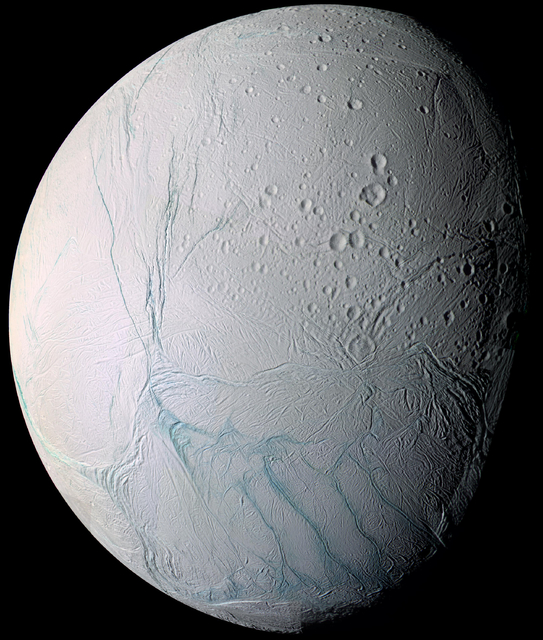LOS ANGELES — New research suggests there are hot springs bubbling beneath the icy surface of a tiny Saturn moon. ADVERTISING LOS ANGELES — New research suggests there are hot springs bubbling beneath the icy surface of a tiny Saturn
LOS ANGELES — New research suggests there are hot springs bubbling beneath the icy surface of a tiny Saturn moon.
If confirmed, it would make the moon Enceladus the only other known body in the solar system besides Earth where hot water and rocks interact underground.
That activity would make the moon an even more attractive place in the hunt for microbial life. On Earth, scientists have found weird life forms living in hydrothermal vents on the ocean bottom where there’s no sunlight.
The research comes from Cassini, a NASA-European spacecraft that launched in 1997 to explore Saturn and its numerous moons from orbit. It previously uncovered a vast ocean beneath Enceladus and a giant plume of gas and ice streaming from cracks in the south polar region.
In the latest study, a group led by Cassini team member Sean Hsu of the University of Colorado in Boulder used spacecraft observations and computer modeling to show that the plume is connected to what’s happening on the lunar sea floor.
Judging by their size and makeup, the team believes particles in the plume are the result of hot water coming into contact with rocks on the ocean floor. The resulting mineral-rich water then shoots up through the icy crust and erupts into space in a plume of gas and ice. Some particles settle around Saturn, replenishing its biggest ring.
The new work also suggests that the ocean is deeper than previous estimates — more than 30 miles (50 kilometers) deep below the icy crust. It did not provide details on how big the ocean might be, but the Cassini team last year said it could be as big as or even bigger than North America’s Lake Superior.
Cassini should get a better glimpse of the plume later this year when it flies through it, passing within 30 miles (50 kilometers) above Enceladus’ surface.
The findings were published online Wednesday in the journal Nature.
In an accompanying editorial, Gabriel Tobie of France’s University of Nantes said the environment beneath Enceladus appears similar to the underwater system of hot springs and towering spires nicknamed “Lost City” in the mid-Atlantic.
It would take future missions such as a lander on the surface of Enceladus to “fully reveal the secrets of its hot springs,” he wrote.




